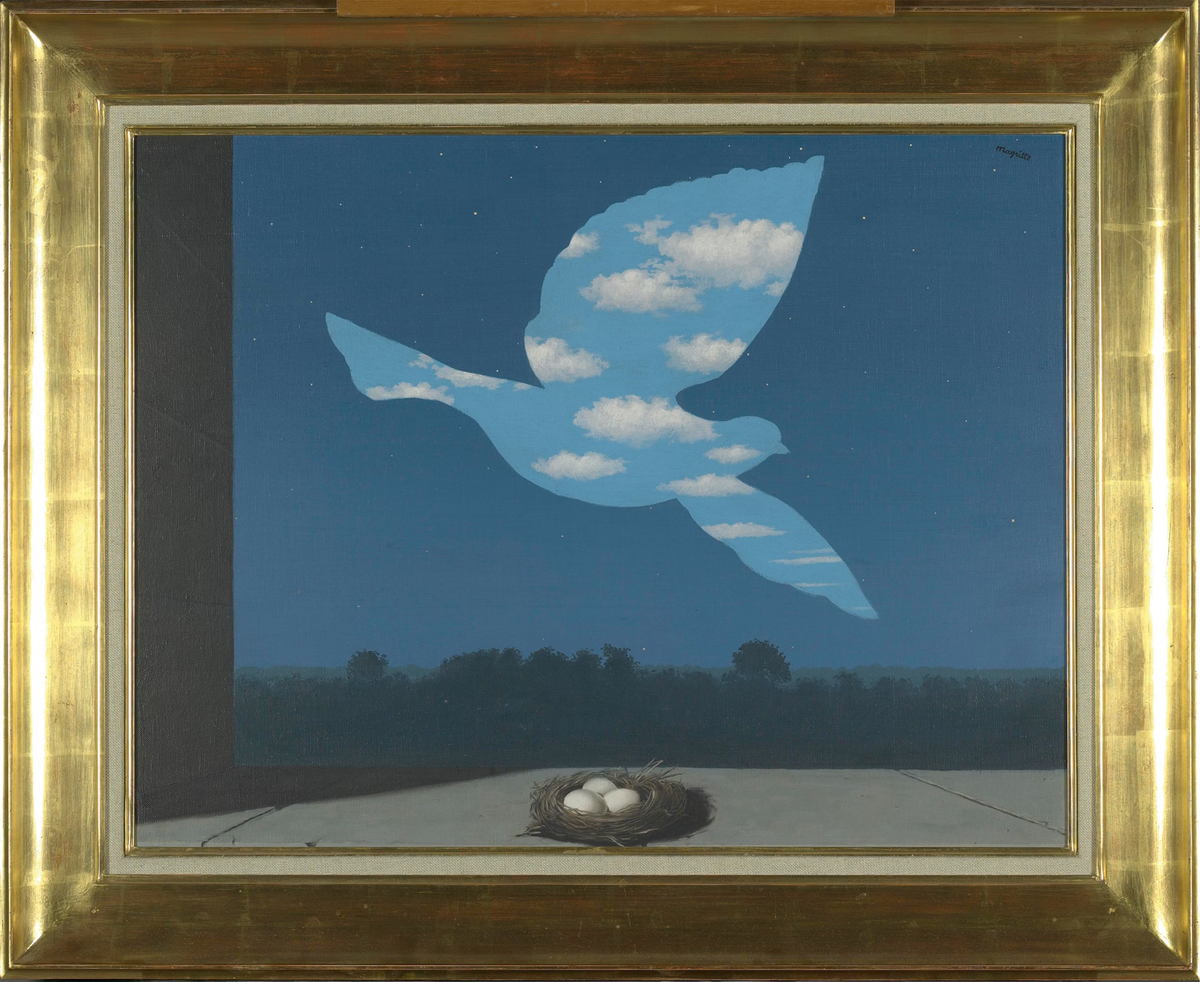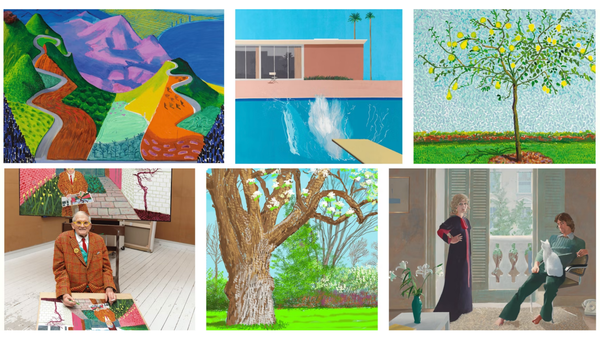The surreal world of René Magritte
René Magritte's surreal universe, filled with iconic imagery and profound mysteries, captivates with its exploration of the extraordinary in the everyday.

In the realm of modern art, few names conjure a world as enigmatic and beguiling as that of René Magritte. His work, a meticulous ballet of paradox and poetry, invites us to gaze beyond the veil of the ordinary and glimpse the unsettling beauty that lies beneath. To step into Magritte’s universe is to enter a landscape where the boundaries of reality dissolve, leaving in their place a dreamscape populated by floating bowler hats, obscured faces, and skies that weep clouds like stone.
In Brussels, where the Magritte Museum offers an unparalleled window into this surrealist dimension, one can wander through the corridors of Magritte's mind, tracing the evolution of his thought as it unfolds across canvas, paper, and film. Yet to speak of Magritte is to speak of something far more profound than the sum of his works; it is to delve into the very fabric of his imagination, where every brushstroke is a whisper from the unknown, and every image, a riddle wrapped in silence.
The alchemy of the everyday
Magritte's genius lies not in the creation of fantastical worlds but in his transformation of the everyday into something ineffably strange. He was, in essence, an alchemist of the familiar. A simple apple becomes a monolith of mystery, a pipe defies its own identity, and a man in a bowler hat becomes a cipher for the unknowable. Through his art, Magritte compels us to question not only what we see but how we see, to recognise that our perceptions are fragile constructs, easily shattered by the slightest shift in perspective.
Consider “The Lovers,” where two figures, their faces shrouded in cloth, engage in an eternal kiss—a kiss that is at once intimate and impenetrable. What does it mean to love what we cannot see, to be drawn to the obscured, the hidden? Magritte doesn’t provide answers; he merely lays the question bare, leaving us to wrestle with the delicious uncertainty that follows.
The silence of images
Magritte’s world is one where silence reigns. His paintings, though often filled with figures and objects, are curiously devoid of sound. This silence is not mere absence; it is the silence of the unsaid, the unarticulated, the secrets that lie just beyond the grasp of language. In “The Treachery of Images,” Magritte confronts us with the disarming truth that a picture of a pipe is not, in fact, a pipe. It is a representation, an illusion, a betrayal of the reality it purports to depict. And so, we are reminded that every image, no matter how vivid, is but a shadow of the thing itself, a ghostly echo of what we believe to be true.
The Magritte Museum in Brussels, with its vast collection, is a sanctuary for these silent images. Here, the air is thick with the unspoken, as if the very walls are alive with the echoes of Magritte’s thoughts. Each room is a chapter in a story that refuses to reveal its ending, a puzzle whose pieces forever elude our grasp. As you wander through this labyrinth of visual enigmas, you cannot help but feel that you are on the cusp of understanding something profound—only for it to slip through your fingers like so much smoke.
The man behind the mystery
Yet who was René Magritte, this conjurer of the surreal? He was, in many ways, an ordinary man—reserved, meticulous, even bourgeois in his habits. He lived in a modest house in Brussels, far removed from the bohemian tumult of Paris, where many of his contemporaries thrived. And yet, it was this very ordinariness that fueled his art. Magritte was not interested in escaping reality; he was interested in revealing the strangeness within it.
His work is a testament to the idea that the extraordinary does not lie in distant lands or exotic visions, but in the quiet corners of our own lives, waiting to be uncovered. The Magritte Museum pays homage to this vision, not just by displaying his art, but by capturing the essence of the man who created it. Through letters, photographs, and personal artefacts, we catch glimpses of the artist at work—drafting ideas in the early morning light, pondering the mysteries that would one day find the form on canvas.
A legacy of surrealism
Magritte’s influence stretches far beyond the boundaries of the canvas. His work has infiltrated the collective unconscious, leaving its mark on everything from cinema to advertising, literature to philosophy. The visual lexicon he created—his motifs of apples, bowler hats, and cloudy skies—has become shorthand for the surreal, symbols that speak to our deepest anxieties and desires.
At the Magritte Museum, this legacy is not just preserved; it is brought to life. The museum is more than a collection of artworks; it is a living, breathing embodiment of Magritte’s vision. It invites visitors not just to look, but to see—to see the world as Magritte saw it, full of wonder, strangeness, and infinite possibility.
The eternal mystery
René Magritte remains, at his core, an enigma. His art resists easy interpretation, defying the conventional wisdom that art should communicate clear, unambiguous messages. Instead, Magritte’s work revels in ambiguity, in the spaces between certainty and doubt, reality and illusion.
To visit the Magritte Museum is to engage with this mystery, to confront the limits of your own understanding and to embrace the beauty of not knowing. It is a journey into the unknown, guided by an artist who understood that the greatest mysteries are not to be solved, but savoured.
And so, Magritte’s universe remains—a place where the ordinary becomes extraordinary, where silence speaks volumes, and where the most profound truths are those that cannot be put into words.





